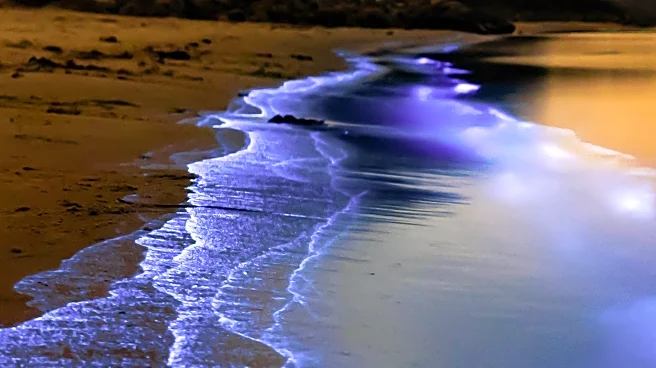What's Happening?
Bioluminescent algae have transformed St. Kilda Beach in Melbourne, Australia, into a spectacle of electric blue hues at night. The algae, known as Nocticula scintillan or 'sea sparkle,' appear as bright pinkish-orange clouds during the day but emit a stunning light display at night. This phenomenon is caused by a chemical reaction when the algae are disturbed, serving as a defense mechanism. While not toxic, the algae can be hazardous to fish due to high ammonia content and oxygen depletion. The occurrence of these algal blooms has increased since the 1990s, linked to warming oceans, which create favorable conditions for the algae.
Why It's Important?
The bioluminescent algae have become a popular attraction, drawing hundreds of visitors to St. Kilda Beach. However, their increased frequency and intensity are indicative of environmental changes, particularly ocean warming. This highlights broader ecological concerns, as such conditions can signal an unhealthy ocean environment. The phenomenon underscores the need for awareness and action regarding climate change and its impact on marine ecosystems.
What's Next?
The continued attraction of visitors to St. Kilda Beach may prompt local authorities to manage the influx and ensure environmental protection. Additionally, ongoing research into the causes and effects of algal blooms could lead to better understanding and mitigation strategies for preserving marine health.
Beyond the Headlines
The bioluminescent algae phenomenon raises ethical and environmental questions about human interaction with natural wonders. It also highlights the cultural significance of such events, as they offer unique experiences that connect people with nature, potentially fostering greater environmental stewardship.

